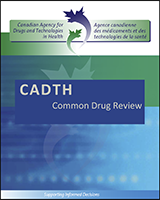1.1. Disease Prevalence and Incidence
Human immunodeficiency virus (HIV)–associated lipodystrophy is characterized by body composition changes, including the accumulation (lipohypertrophy) or loss (lipoatrophy) of fat, and metabolic abnormalities such as dyslipidemia and insulin resistance.7,8 Affected patients may present with lipohypertrophy, lipoatrophy, or a combination of both.
Patients with lipohypertrophy typically have excess visceral adipose tissue (VAT) within the abdomen, but may also have enlarged supraclavicular and dorso-cervical fat pads, anterior neck fat accumulation, or breast enlargement. The underlying mechanisms of lipohypertrophy are understood poorly, which complicates efforts to determine etiology. Researchers hypothesize that pathogenesis is related to the HIV virus itself or to specific antiretroviral therapy (ART) regimens. Evidence suggests that the use of protease inhibitors (PIs), in particular, is commonly associated with the development of lipohypertrophy.9,10 The US Department of Health and Human Services (DHHS) notes that the accumulation of visceral, truncal, dorso-cervical, and breast fat is specifically observed with use of regimens containing older PIs, such as indinavir.11
HIV-associated lipohypertrophy is challenging to define and diagnose, resulting in wide estimates of prevalence. Studies conducted outside Canada and published more than 10 years ago suggest that between 6% and 62% of HIV-infected patients with lipodystrophy are affected by abdominal or central fat accumulation.12 Recent Canadian data are limited: a 2011 survey found that, among 778 HIV-positive patients in Ontario, 31% of individuals experienced lipohypertrophy in the back, abdomen, and/or breasts, while 17% had isolated central lipohypertrophy, which the researchers defined as experiencing at least one major or two minor fat accumulation changes in the back, abdomen, and/or breasts.13 Patients with HIV-associated lipodystrophy indicate that excess VAT has a substantial negative impact on their body image and quality of life (QoL) (0).
1.2. Standards of Therapy
Potential interventions for reducing excess VAT include diet and exercise, metformin (especially among patients with diabetes mellitus), tesamorelin, and surgical interventions, including dorso-cervical fat pad liposuction and reduction mammoplasty.14 Another option that was considered for the treatment of HIV-associated lipodystrophy was somatropin, a recombinant human growth hormone (rhGH), although the brand name product, Serostim, was not approved for this use by the US Food and Drug Administration (FDA) due to “marked increases in glucose intolerance and development of diabetes in some patients.”15 Somatropin is not approved nor used for lipodystrophy treatment in Canada.
In Canada, besides tesamorelin, there are no drugs specifically indicated for the treatment of excess VAT in treatment-experienced adult HIV-infected patients with lipodystrophy.
1.3. Drug
Tesamorelin is a synthetic analogue of growth hormone–releasing factor (GRF).16 It mimics the pharmacology of GRF in vitro by stimulating the synthesis and secretion of human growth hormone (hGH), which binds to receptors on a variety of target cells, including adipocytes, thus resulting in diverse metabolic effects, such as lipolysis.
The recommended dose of tesamorelin in Canada is 2 mg injected subcutaneously once a day, and the recommended injection site is the abdomen.16 Tesamorelin is not indicated for weight loss management; i.e., it has a weight-neutral effect.16 Further, treatment with tesamorelin should be limited to patients who failed to reduce excess VAT using diet and exercise.16
View in own window
| Indication under review |
|---|
| Treatment of excess VAT, as assessed by waist circumference ≥ 95 cm for males and ≥ 94 cm for females, and confirmed by a VAT level > 130 cm2 by computerized tomography (CT) scan, in treatment-experienced adult HIV-infected patients with lipodystrophy. |
| Listing criteria requested by sponsor |
|---|
| As per indication. |

